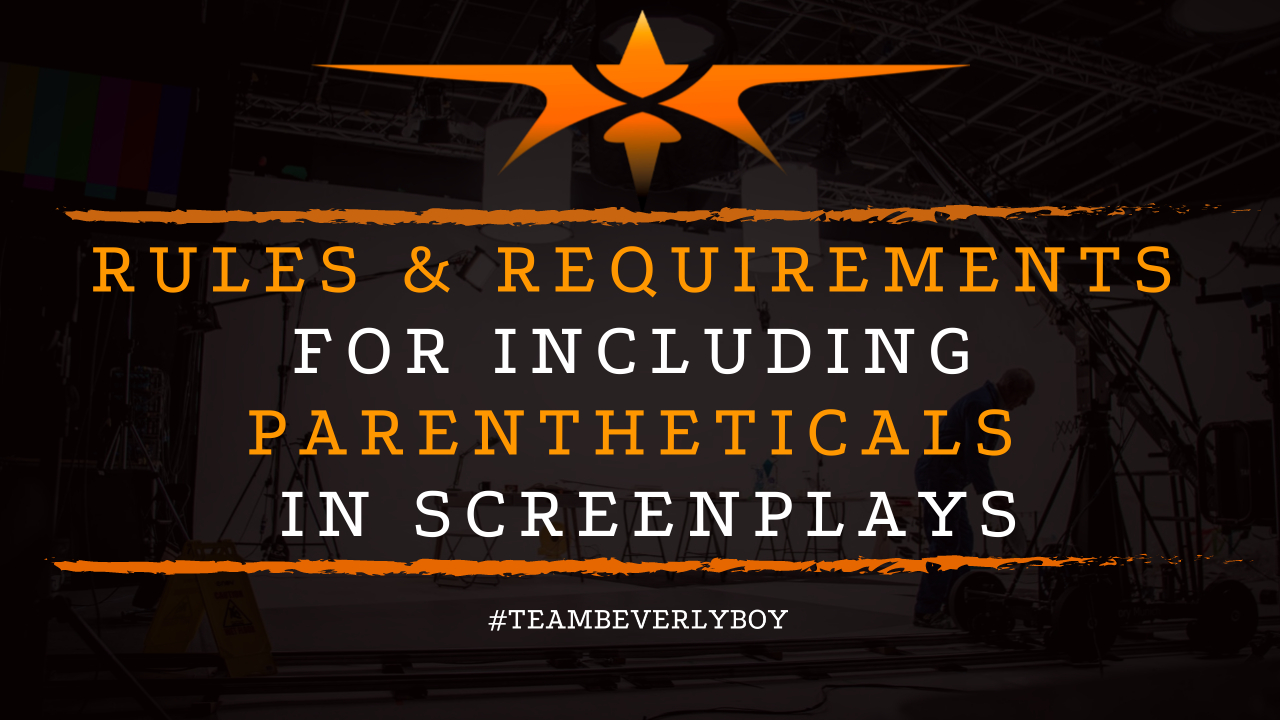
Rules & Requirements for Including Parentheticals in Screenplays
The use of parentheticals in screenplays is technically something that we see from many novice screenwriters. But they’ll also be used by famous screenwriters and those who are highly accredited industry professionals. The difference being that they’re limited. The use of parentheticals in screenplays among those who are professionals in the film and screenwriting industry aims to provide exactly enough supportive detail as required. Without risking the potential of becoming a “wrylie” mess.

The use of parentheticals in screenplays is something that requires a little bit of what we like to call. Following the rules! To help you make the most out of the parentheticals you include in your screenplays, consider the following rules.
1. Avoid Redundancy
As a newbie, you might be compelled to include parentheticals in all the most obvious ways. Perhaps you think that you need to explain to your actors just how to show that they’re “sad” or “miserable”.
But the actors probably don’t think so! So, one of the best pieces of advice that we can give is to use parentheticals in screenplays sparingly.
2. Include Parentheticals to Avoid Confusion
Sometimes, especially in short dialogues, parentheticals can help to avoid confusion. For example, if there’s just a couple of words or sentences being exclaimed between your characters.
And there’s not been much character building done yet. A parenthetical might be used to avoid any confusion in the underlying meaning behind the dialogue. Just use it sparingly, again.
3. Avoid Parentheticals for Action
Many actions can be addressed in your screenplay as just that — actions. Instead of including every action that is anticipated as a parenthetical.
Consider limiting them to only those which are absolutely vital to the script. And which may otherwise be left out if they are not addressed upfront.
If an action is pivotal to the story, and cannot be included as an action in the dialogue. Consider including it as a parenthetical. If an action comes at the end of a dialogue, consider keeping it as a separate line of your description. Instead of putting it into parenthetical form.
4. Do Not Use for Sound
Parentheticals in screenplays are not to be used for sound notes. While there can be notes for the sound crew or for the rest of the crew if important, they should not be included as parentheticals. The same goes for camera directions! In fact, avoid directing all together!
5. Use Correct Punctuation – Lowercase Letters
The first letter of your parentheticals in screenplays should be lowercase. Do not use capital letters for the first word. Make sure that you are using proper punctuation in your parentheticals too.
If multiple items should be included, use a simple semicolon to separate not ellipses, dashes, periods or any other concoction of punctuation.
Following these rules and requirements for including parentheticals in screenplays is important. As you hone your screenwriting skills, and follow the tricks of the trade. You’ll not only grow in the field. But you’ll grow as a professional screenwriter, too.


